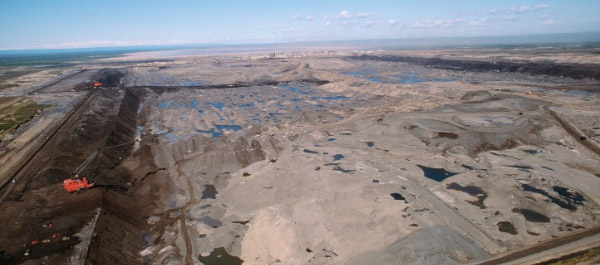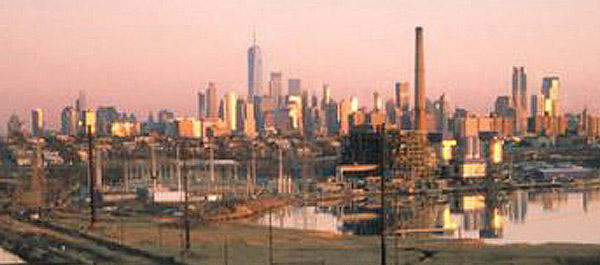
Earth Day: 50 Years Later
January 14, 2023Superfund Sites Require Super Funding

What is a Superfund Site?
Environmental remediation is vital for converting contaminated land to open space, parks, or new developments.
The majority of these contaminated properties are known as Brownfields, while the most highly-contaminated are called “Superfund sites.” The federal government enacted the Comprehensive Environmental Response, Compensation, and Liability Act (CERCLA) of 1980 also known as the Superfund Act, and administered by USEPA. Superfund sites are typically former landfills and shuttered heavy manufacturing facilities or chemical plants.
Because of their severe levels of contamination, these properties are the most challenging and expensive to remediate. With costs that can exceed tens of millions of dollars, only the federal government has the resources to fully address them.
As of this writing, May 2020, there are approximately 10,000 Superfund sites in the federal database. Due to limited resources, 1,335 are active Superfund sites on the USEPA’s National Priority List (or “NPL” – the remainder may be temporarily addressed by states and later added to the NPL). This compares to an estimated 450,000 brownfield sites. There are now an additional 51 sites in the US that have been proposed to receive Superfund designation with 424 sites having been remediated since 1980.
The costs are high, but the task is imperative. Typically, after an initial assessment and testing, a “Source Control Action” is taken to contain the source of the Superfund site’s pollution and prevent potential impact to surrounding properties. This is followed by long-term remedial action to clean up the site. Once a site has been successfully remediated, it is monitored every five years, at a minimum, to ensure the continued safety of the property and surrounding area.
The States’ role in the Superfund process
States are required to provide 10% of the funding for remediation of Superfund sites or 50% if the state was an operator of the property at the time of contamination. They are also required to pay 100% of site maintenance costs beginning 10 years after the site is successfully remediated.
New Jersey’s Superfund Legacy
The Garden State has 115 active Superfund sites, more than any other state. An additional 35 sites have been remediated and continue to be monitored.
New Jersey has played a major role in the history of the Superfund program. In 1977, a massive and tragic chemical fire in Bridgeport, NJ, along with excessive pollution in the Passaic River and other locations, became catalysts for calls to better manage the disposal and cleanup of chemical waste. Such events led to New Jersey’s Spill Compensation and Control Act of 1977.
New Jersey’s “Spill Act’ predated CERCLA, an Act that was sponsored by former New Jersey Governor Jim Florio, at the time a congressman in the US House of Representatives.
Because of the density of population and number of contaminated sites in New Jersey, the majority of NJ residents live within 10 miles of a Superfund site as shown on the USEPA-maintained map and comprehensive list. Most of these sites became contaminated between the 1950s and ‘70s before the strengthening of environmental laws and regulations. Today land is better protected with more Superfund sites being remediated than created. The reclamation of contaminated land is slow yet steady. A few of New Jersey’s Superfund successes include:
Bog Creek Farm, Howell – After the owner of this farm disposed of toxic materials on the property in 1973 and 1974 it was deemed a Superfund site in the early 1980s. Since then, the USEPA has done an extensive cleanup of soil, capped and reseeded the land, and installed a slurry and groundwater treatment system. In the past decade the site, which ceased to be a health risk, was donated to Howell Township and has since been converted into public athletic fields.
Brick Township Landfill – This former environmental detriment has become an environmental opportunity. The landfill ceased operations in 1979. By 1990, contamination was found to have seeped into 470 acres of surrounding groundwater. Between 2011 and 2013 an impermeable landfill cap was installed to contain the spread of further pollution. In 2014 the site was leased to a solar energy company. Today it is home to a 7-megawatt solar farm. Monitoring of the site under the Superfund program is ongoing.
Chemsol Inc., Piscataway – In the 1950s and ‘60s, the Chemsol chemical factory operated a 40-acre facility. Its production of flammable chemicals and solvents led to fires on-site and contamination of the surrounding land. It was added to the Superfund National Priority List in 1983. The site’s new owner, at the direction of the USEPA, installed groundwater monitoring wells and remediated soil on the property during the 1980s. In 1994, the USEPA constructed a groundwater treatment plant at the site which was doubled in capacity in 2011. The result has been the restoration of the land and the re-emergence of 4.5 acres of nearby wetlands.
The Future of Superfund
In July 2017, a USEPA special task force released five recommendations for the future of Superfund remediation. They include methods to: expedite cleanup; reinvigorate actions of responsible parties; encourage private investment; engage partners and stakeholders; and promote redevelopment and community revitalization. All of the recommendations and goals set by the USEPA special task force will require substantial funding to achieve. Brinkerhoff supports the need for this funding. We are committed to helping meet the environmental and engineering challenges we face to clean up these sites in order to create more workable, livable, and sustainable communities.



